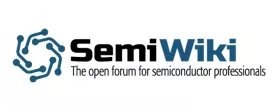Evolution of process models, part I
Thirty five years ago, in 1976, the Concorde cut transatlantic flying time to 3.5 hrs, Apple was formed, NASA unveiled the first space shuttle, the VHS vs Betamax wars started, and Barry Manilow’s I Write the Songs saturated the airwaves. Each of those advances, except perhaps Barry Manilow, was the result of the first modern-era, high-production ICs.
During those years, researchers were anticipating the challenges of fabricating ICs that, according to Moore’s Law, would double in transistor count about every two years. Today, the solution to making features that are much smaller than the 193nm light used in photolithography is collectively referred to as computational lithography (CL). Moving forward into double patterning and even EUV Lithography, CL will continue to be a critical ingredient in the design to manufacturing flow. Before we get distracted by today’s lithography woes, let’s look back at the extraordinary path that brought us here.
To read the full article, click here
Related Semiconductor IP
- HBM4 PHY IP
- Ultra-Low-Power LPDDR3/LPDDR2/DDR3L Combo Subsystem
- MIPI D-PHY and FPD-Link (LVDS) Combinational Transmitter for TSMC 22nm ULP
- HBM4 Controller IP
- IPSEC AES-256-GCM (Standalone IPsec)
Related Blogs
- Cadence Silicon Success of UCIe IP on Samsung Foundry’s 5nm Automotive Process
- Ethernet Evolution: Trends, Challenges, and the Future of Interoperability
- The Evolution of AI and ML- Enhanced Advanced Driver Systems
- The Evolution of CXL.CacheMem IDE: Insights into CXL3.0 Security Feature
Latest Blogs
- ReRAM in Automotive SoCs: When Every Nanosecond Counts
- AndeSentry – Andes’ Security Platform
- Formally verifying AVX2 rejection sampling for ML-KEM
- Integrating PQC into StrongSwan: ML-KEM integration for IPsec/IKEv2
- Breaking the Bandwidth Barrier: Enabling Celestial AI’s Photonic Fabric™ with Custom ESD IP on TSMC’s 5nm Platform
